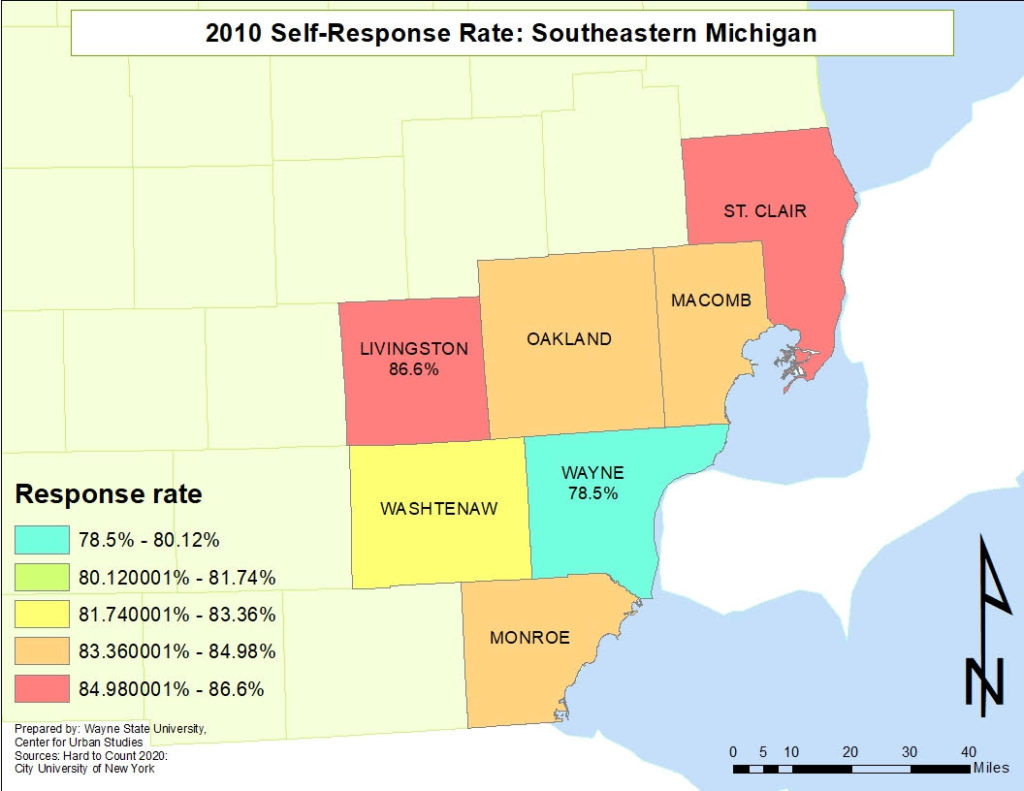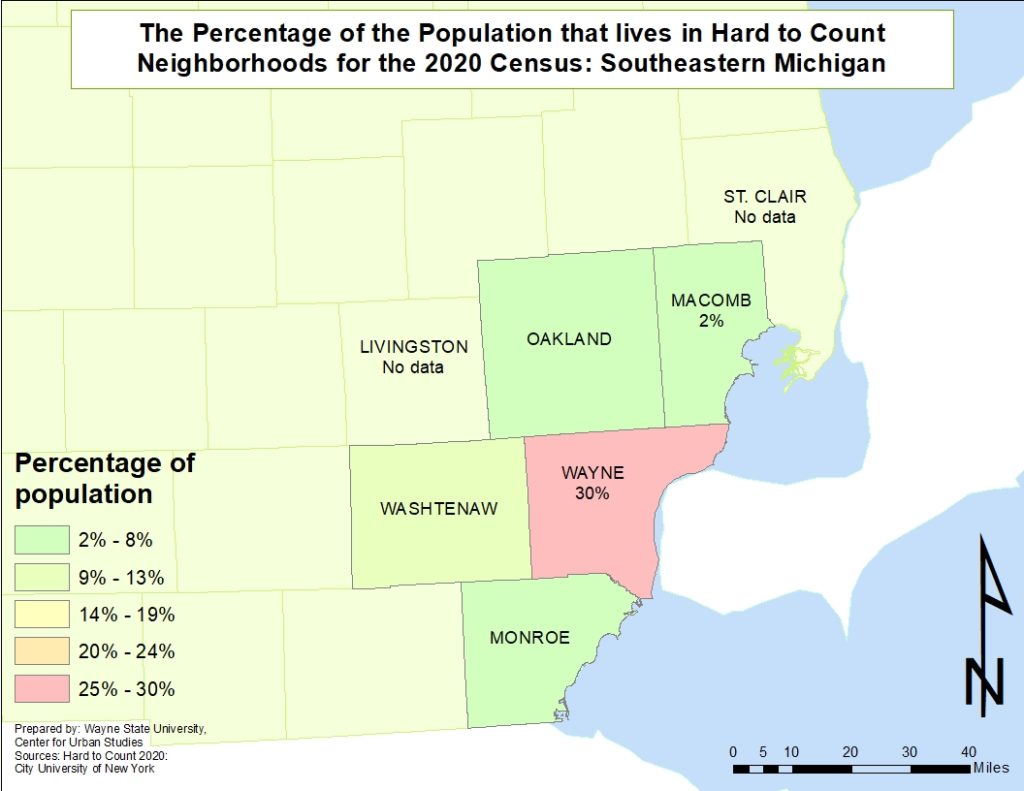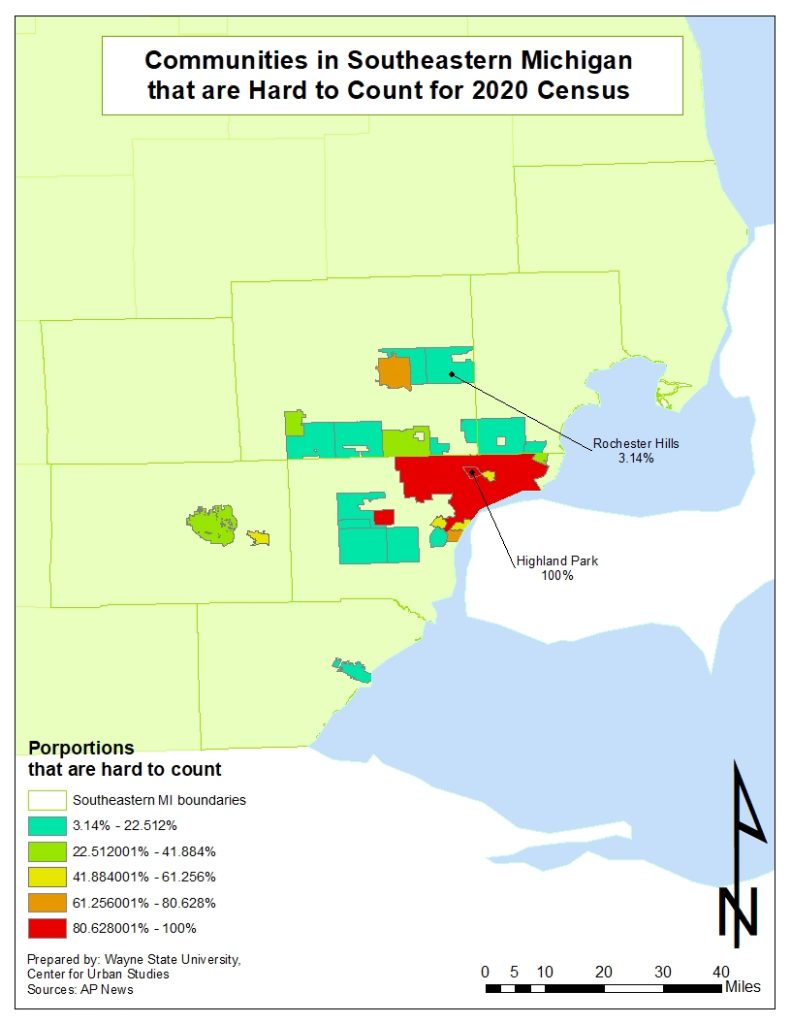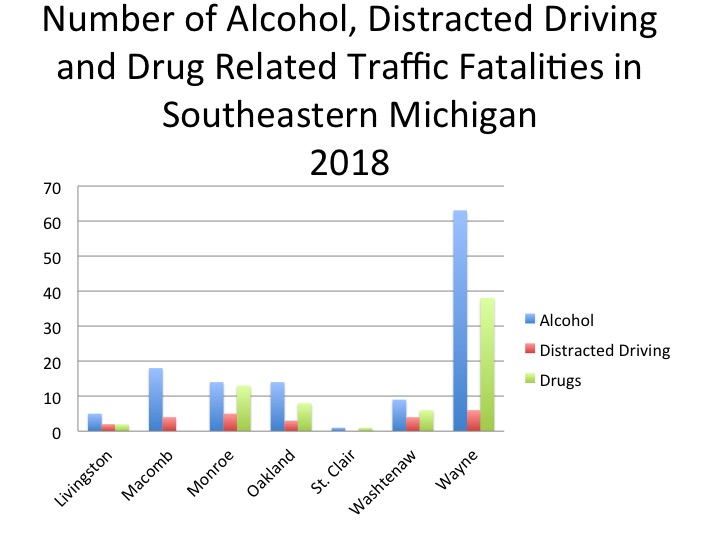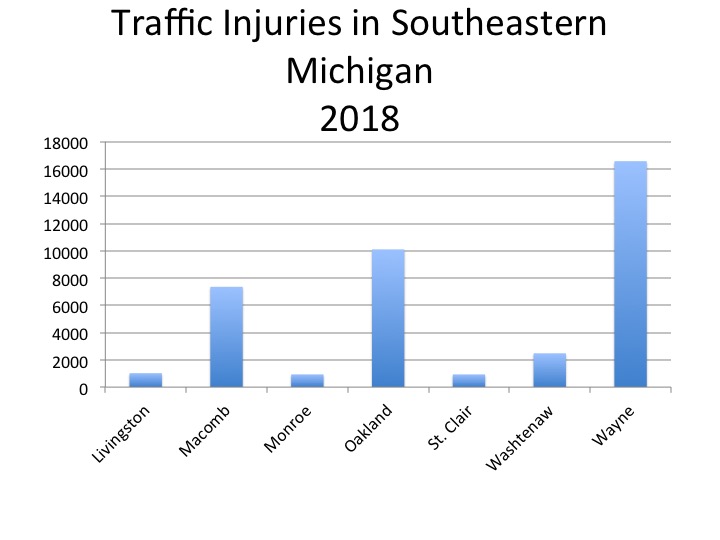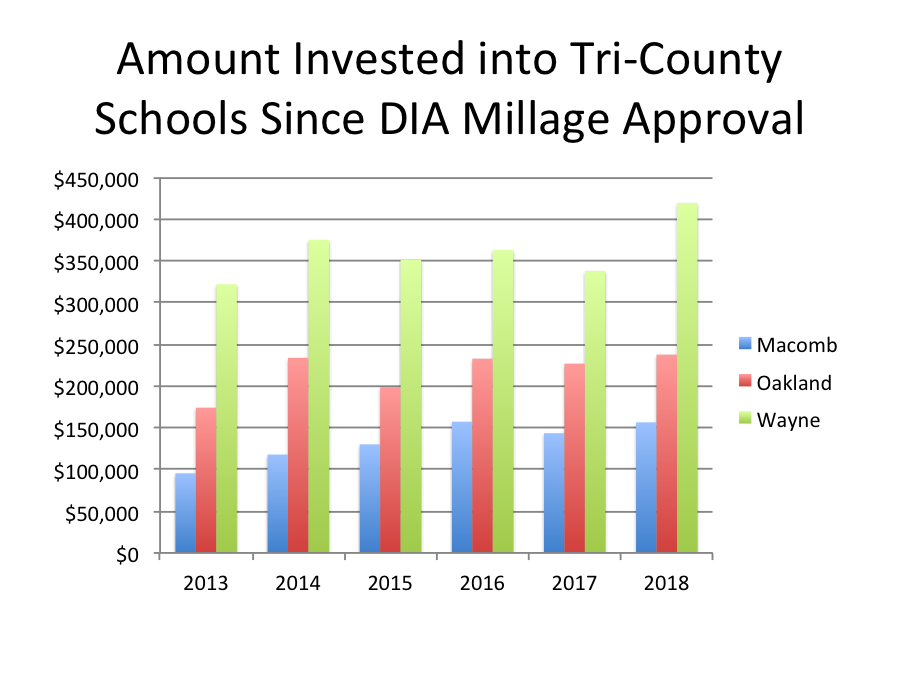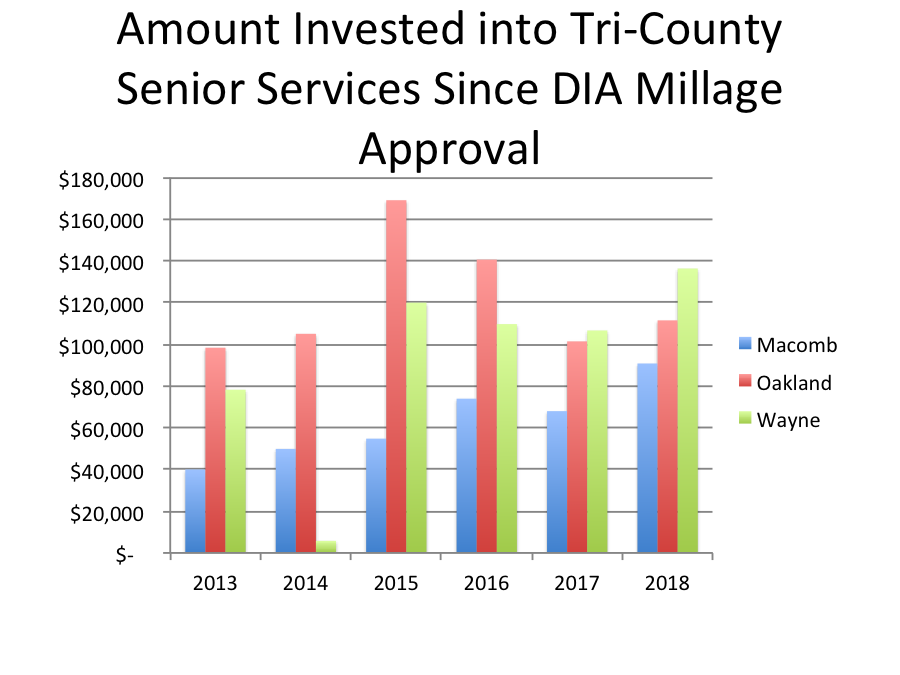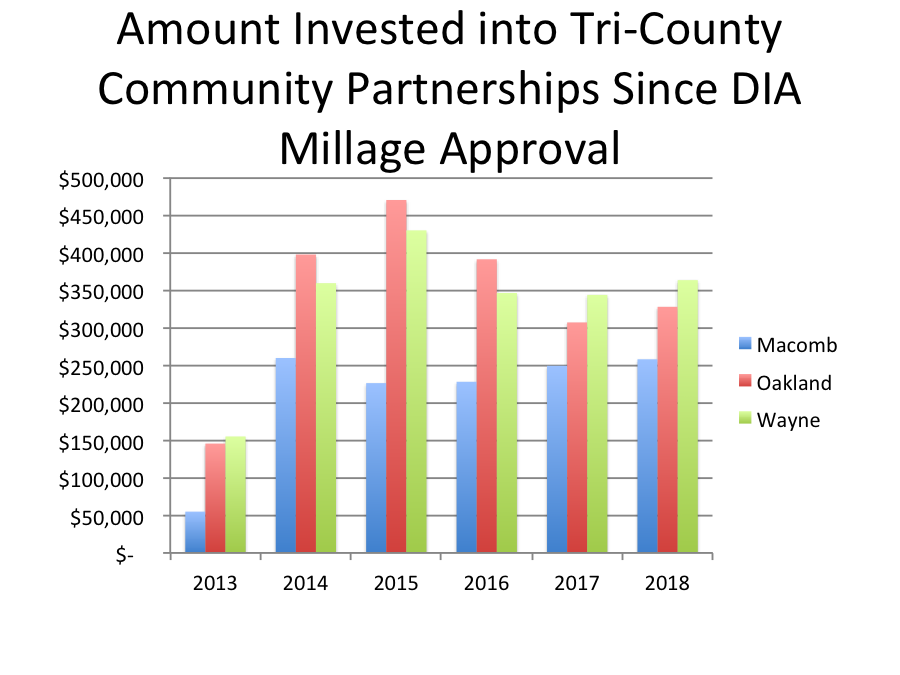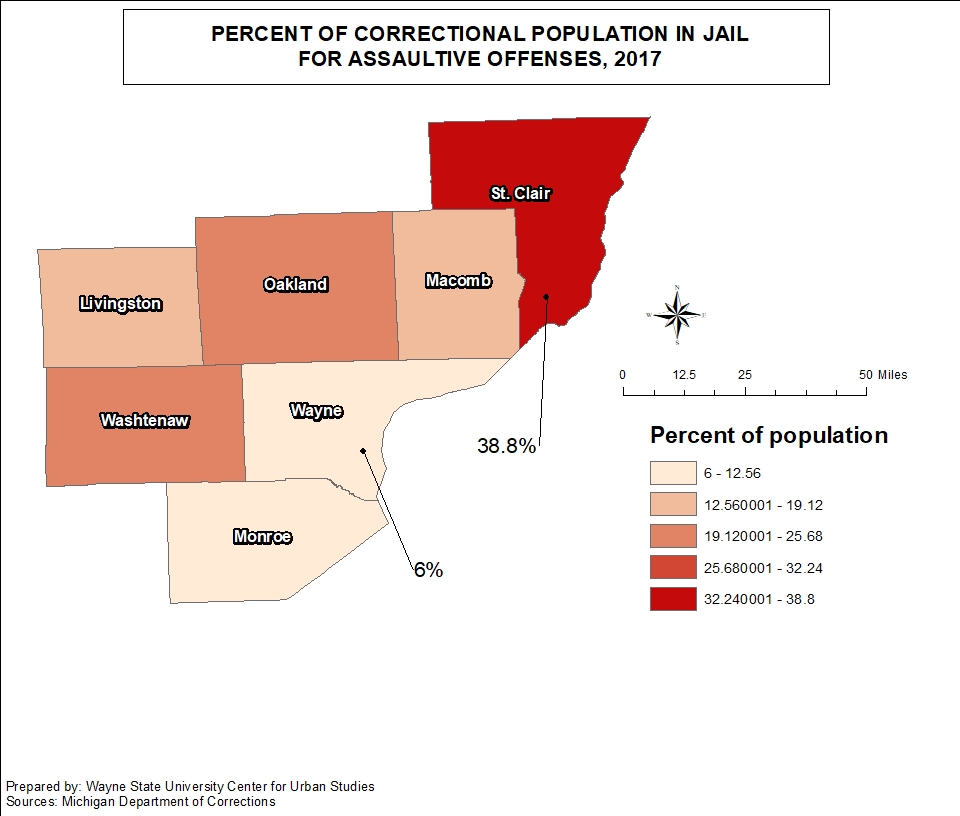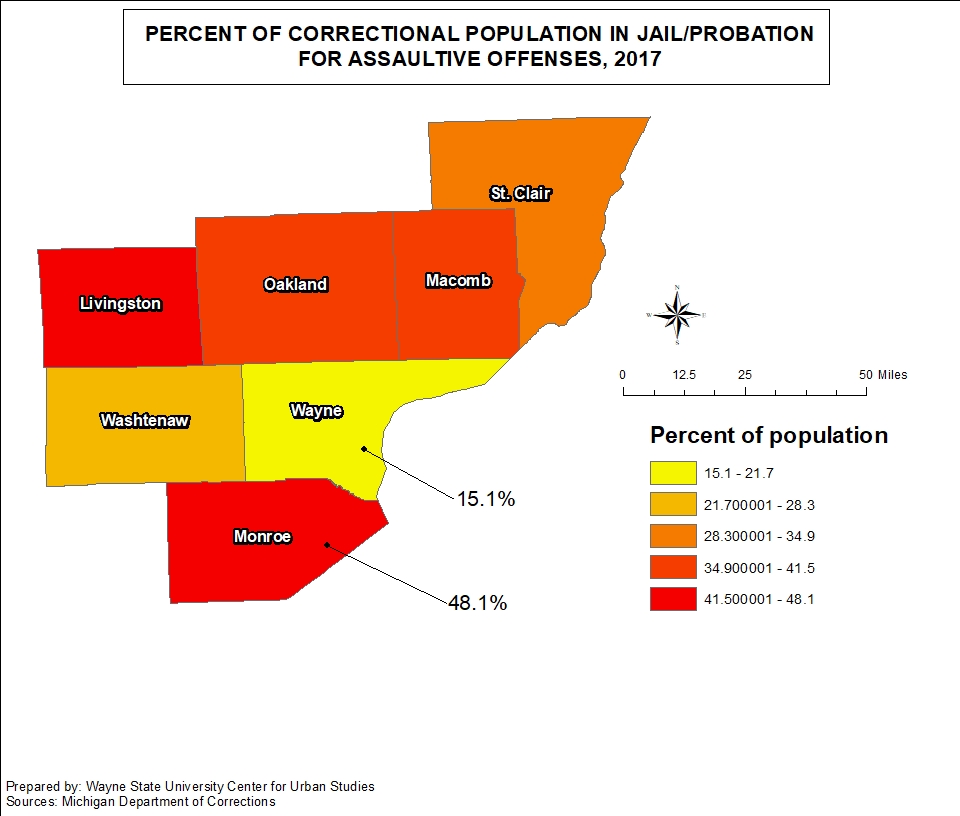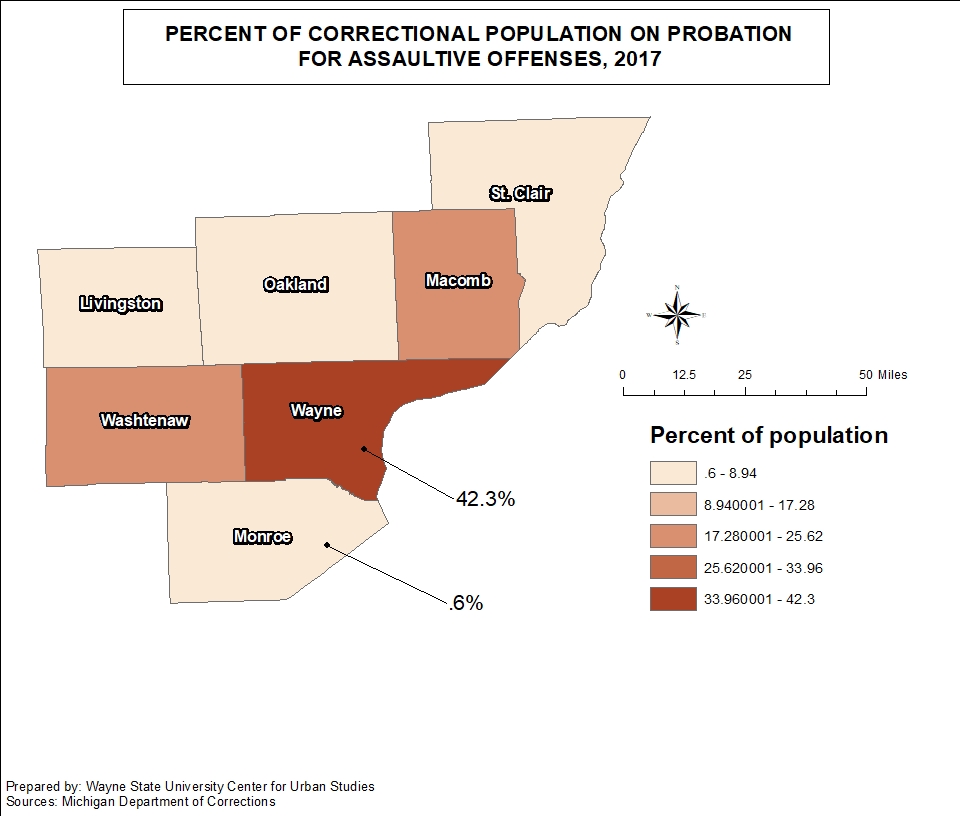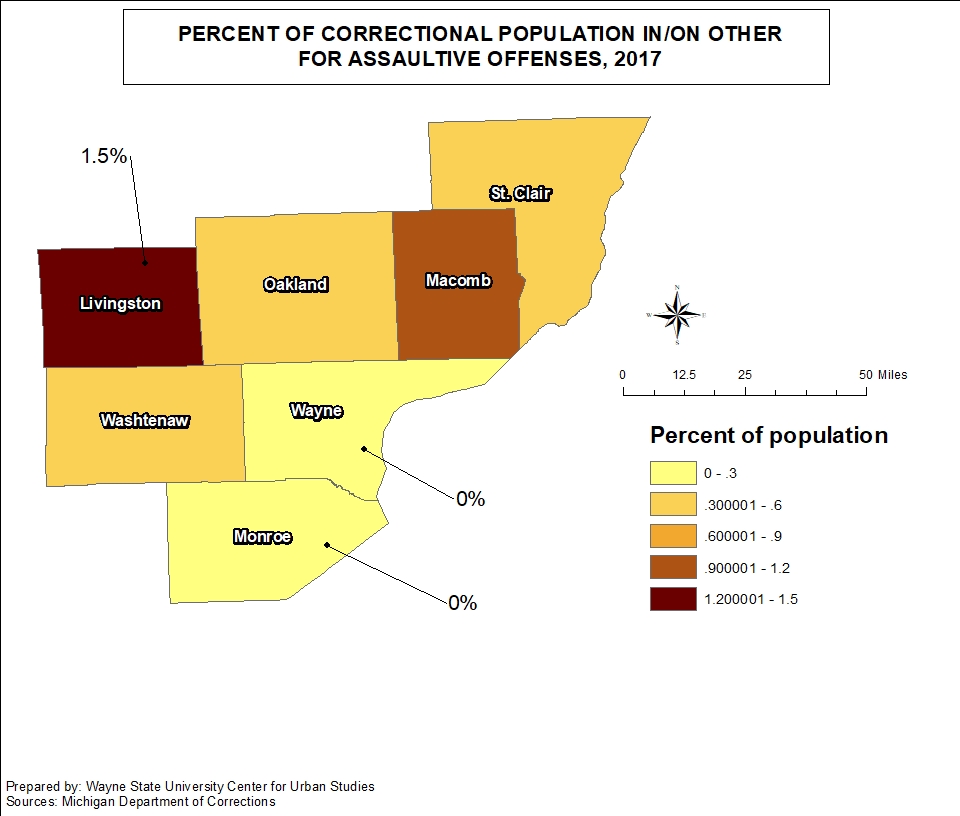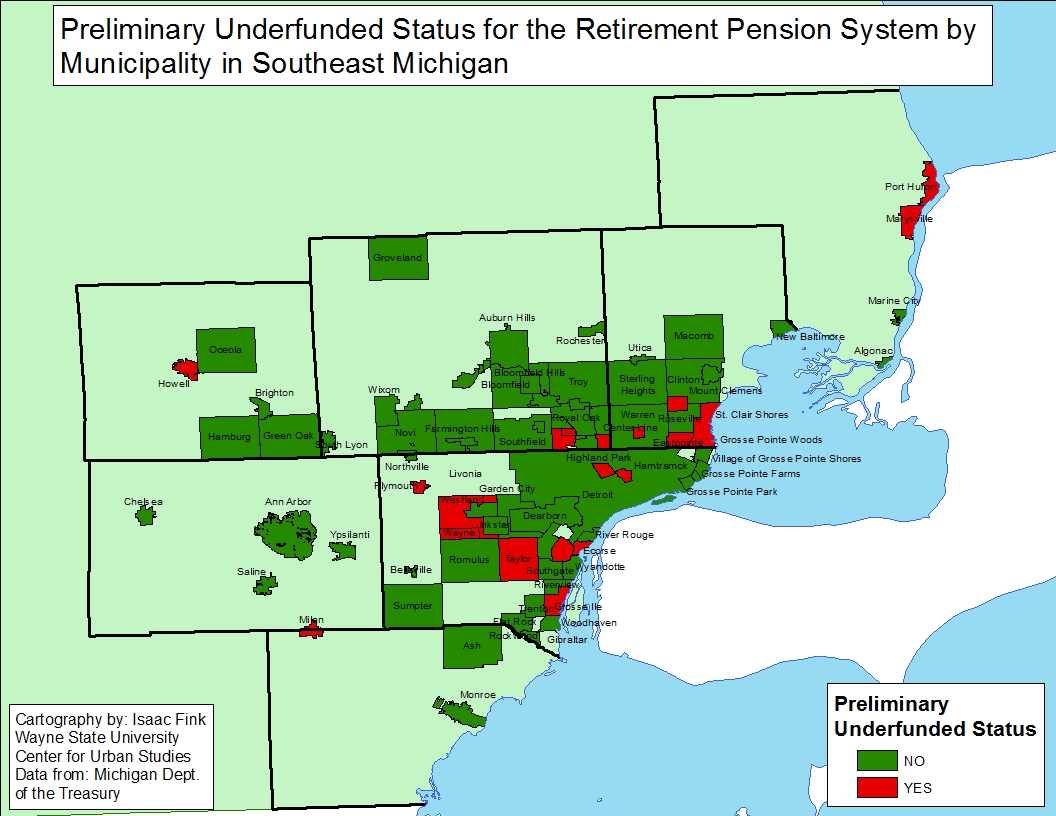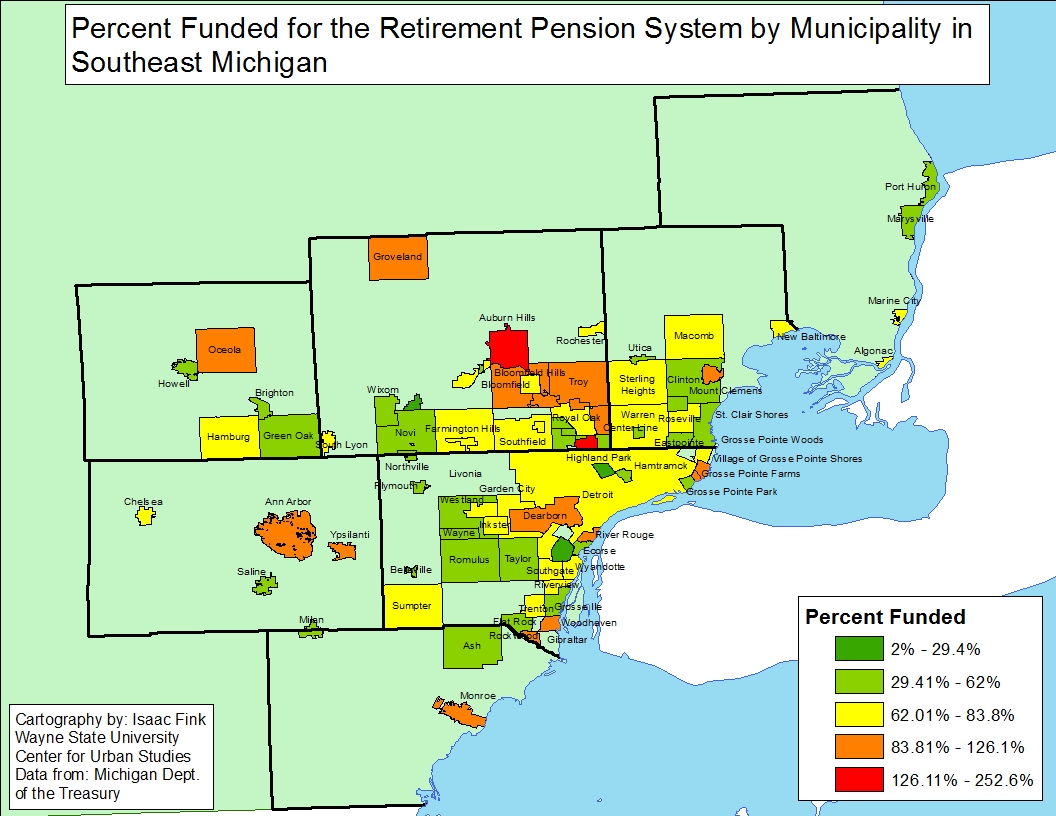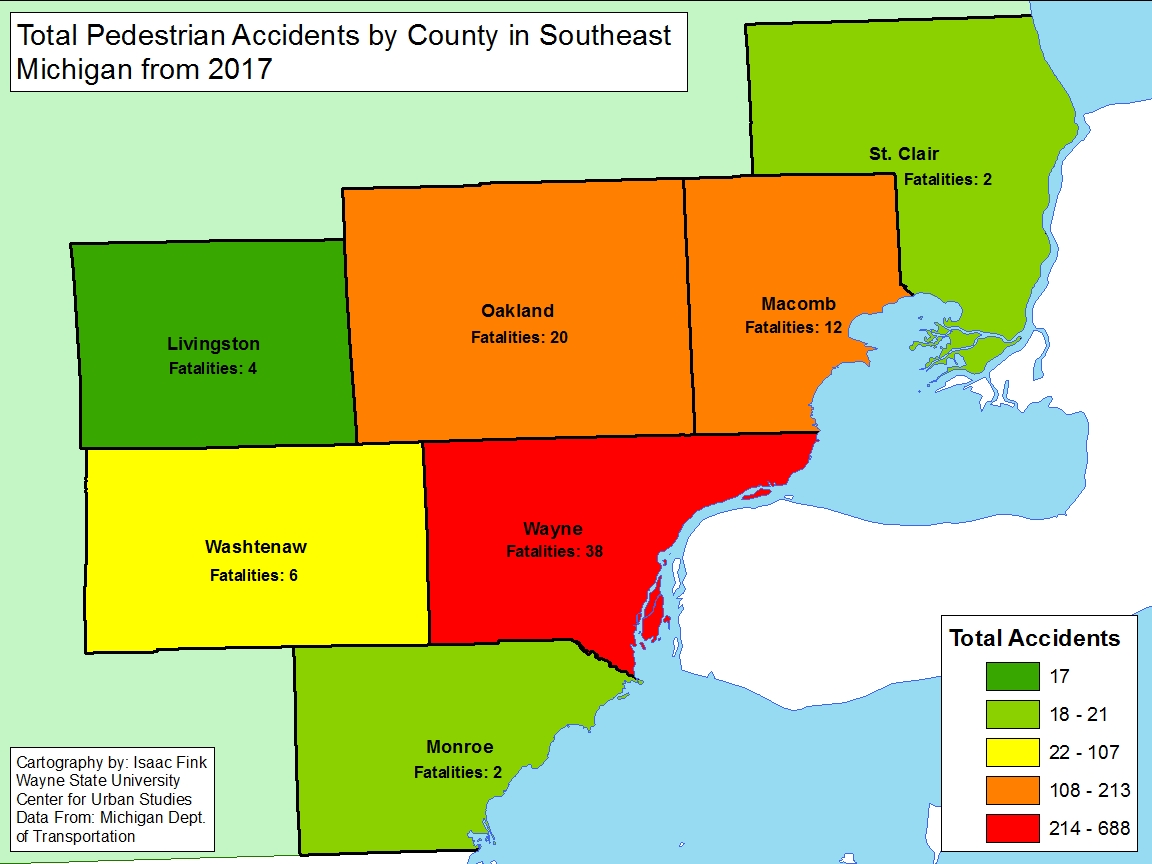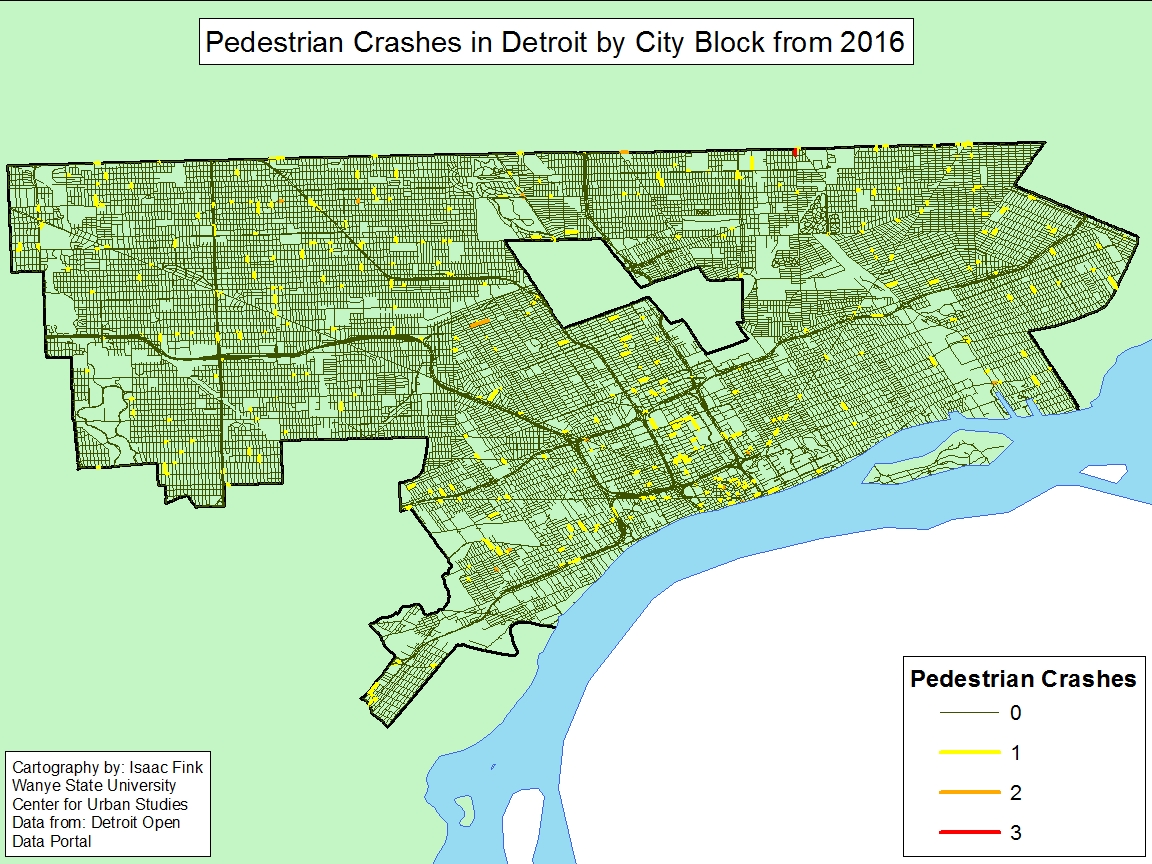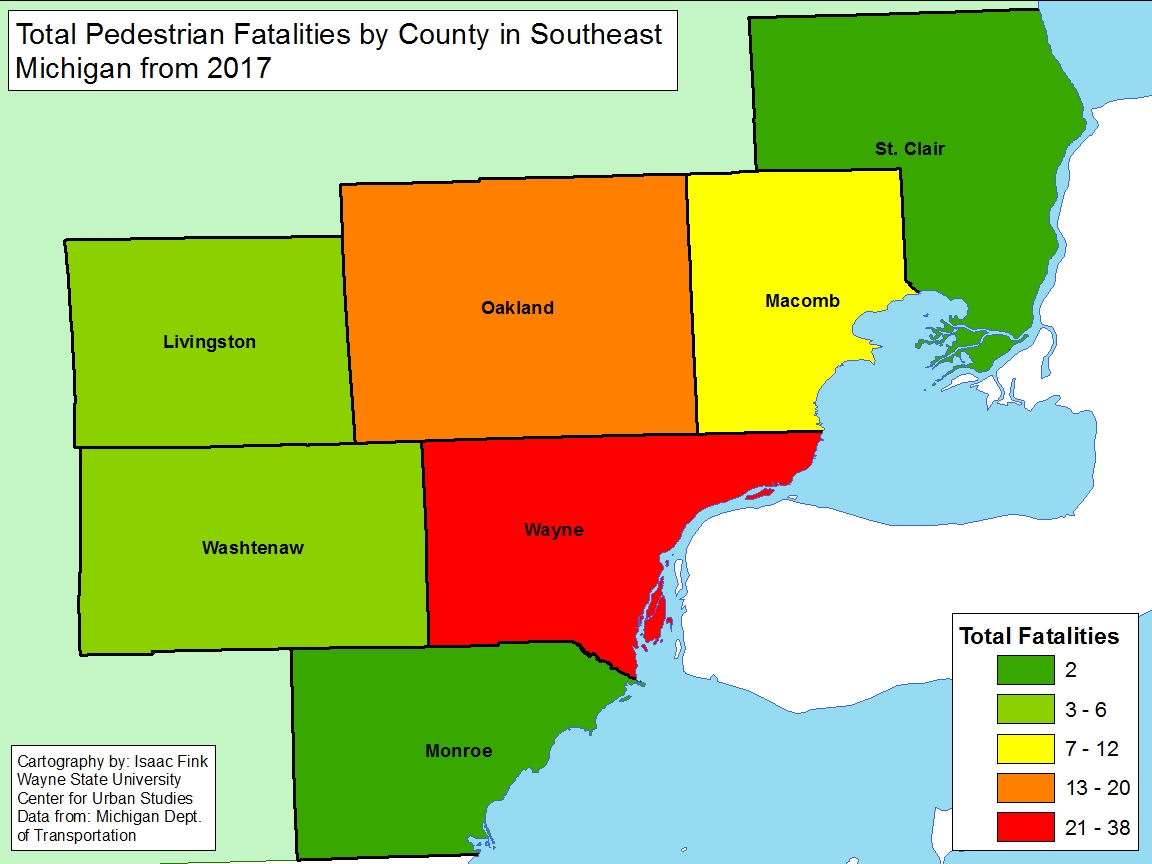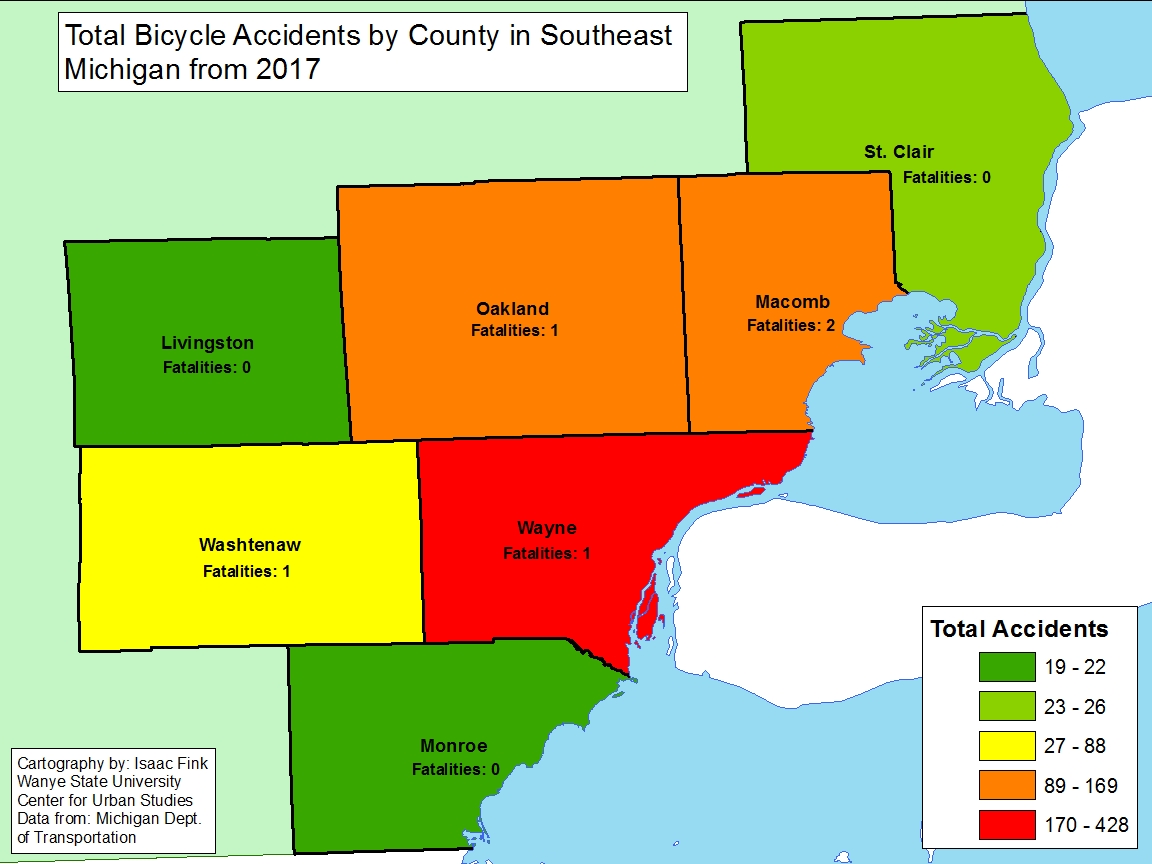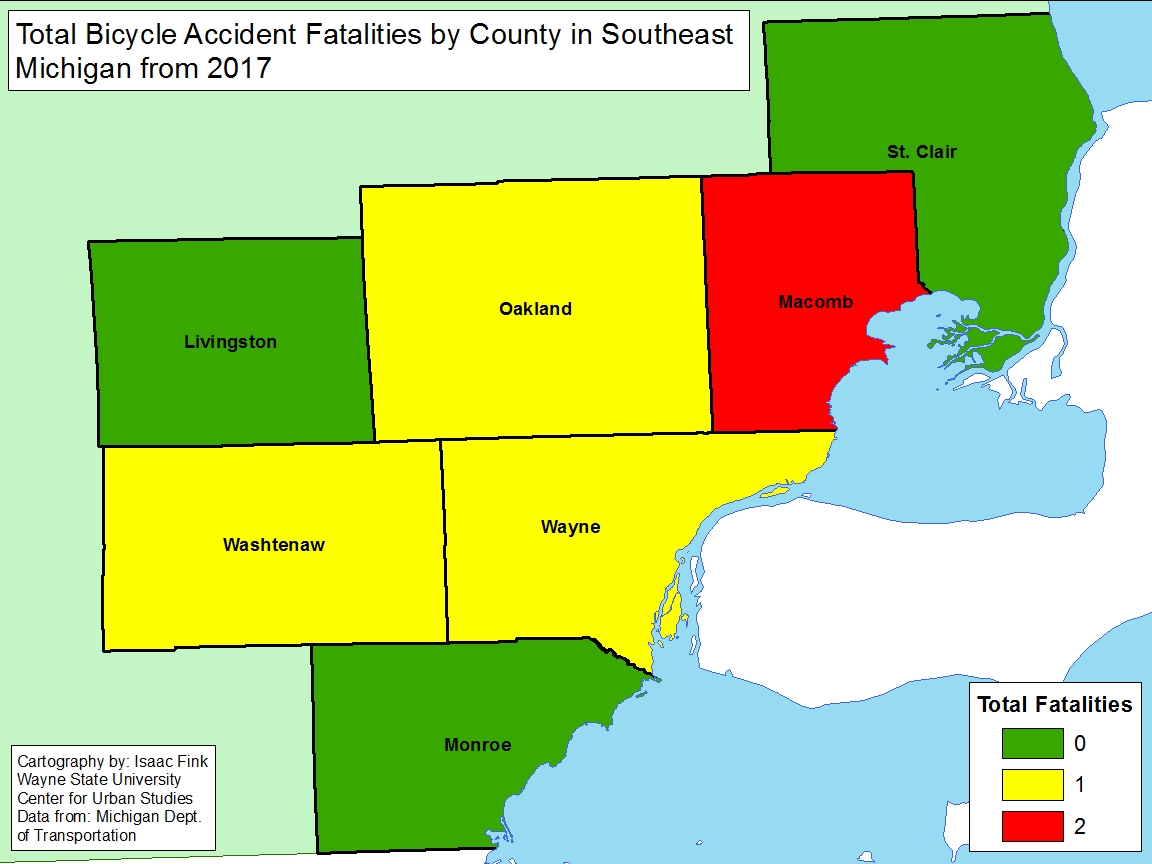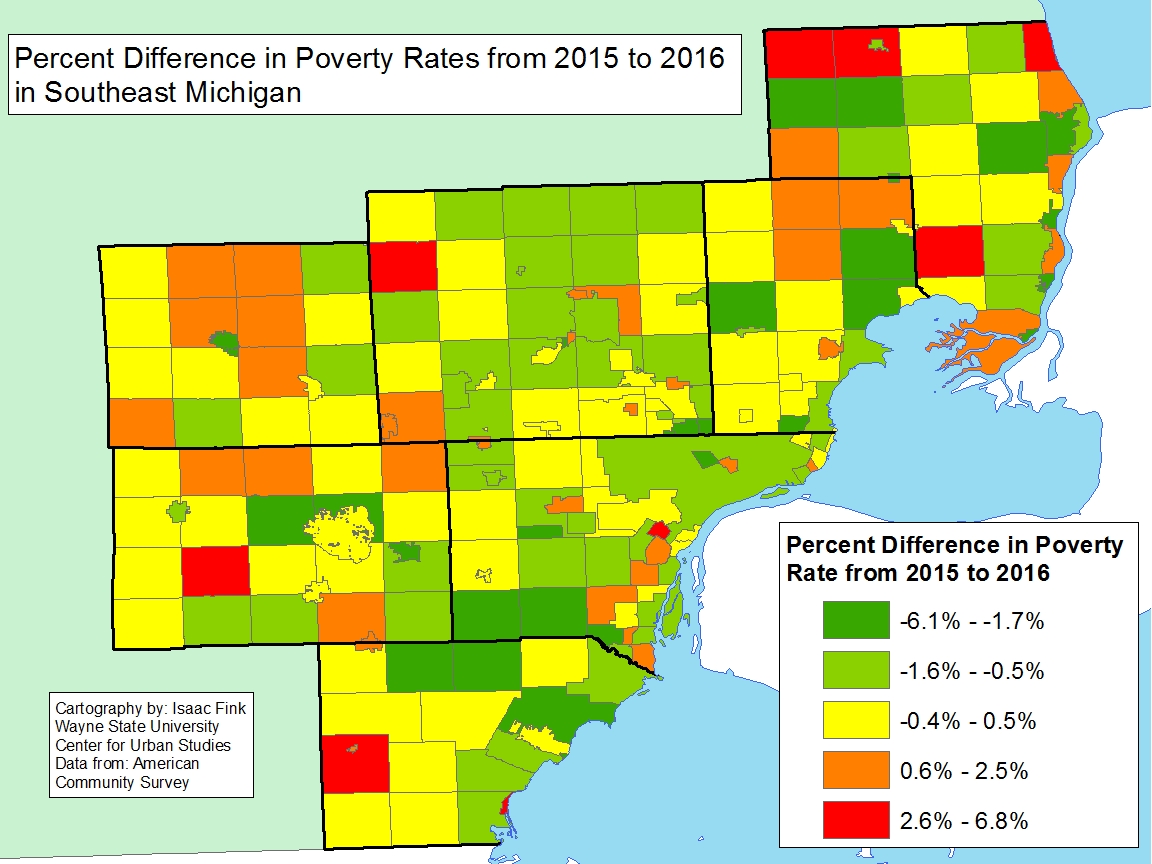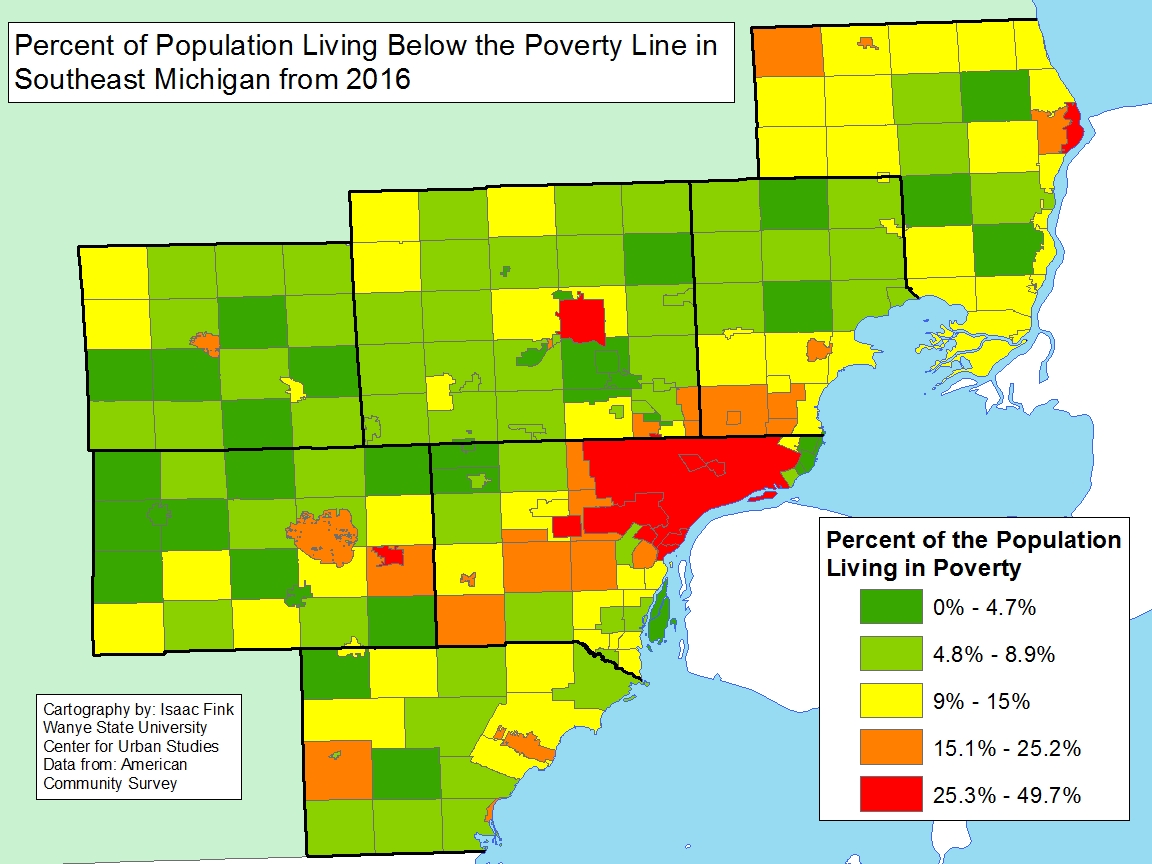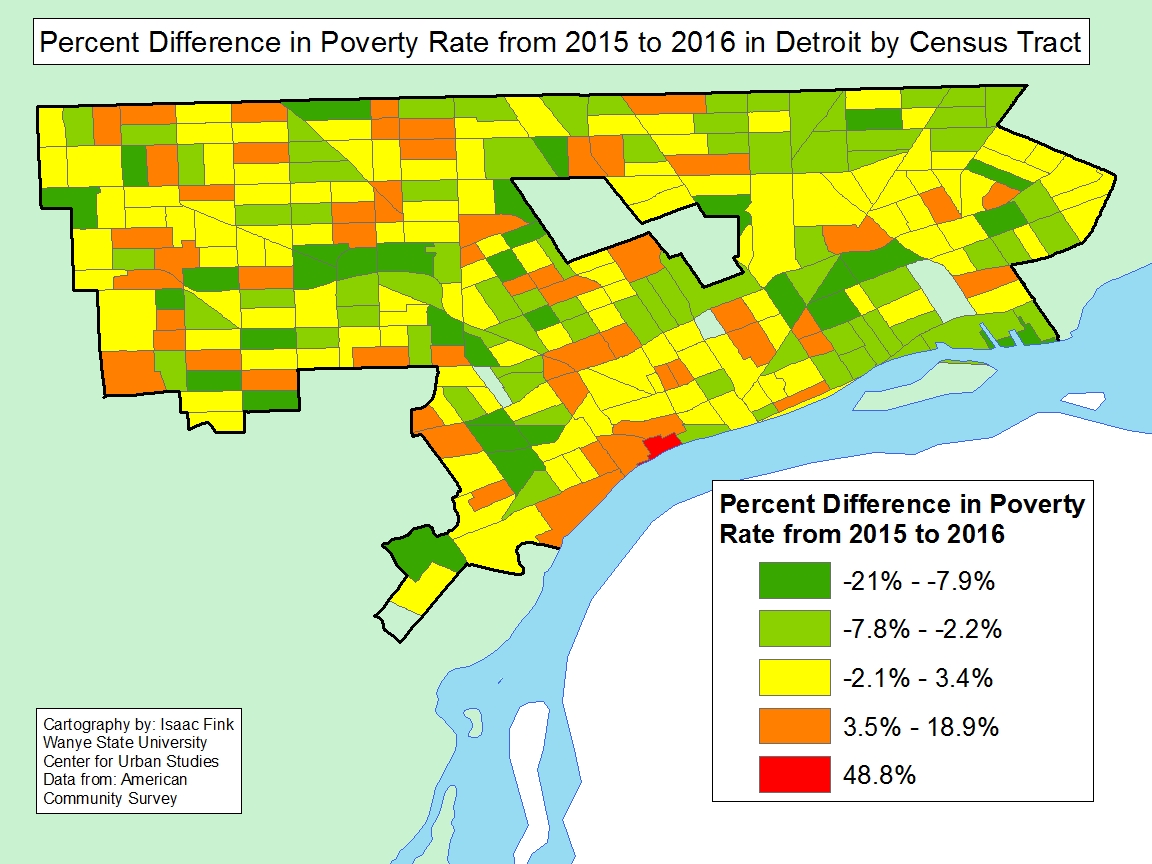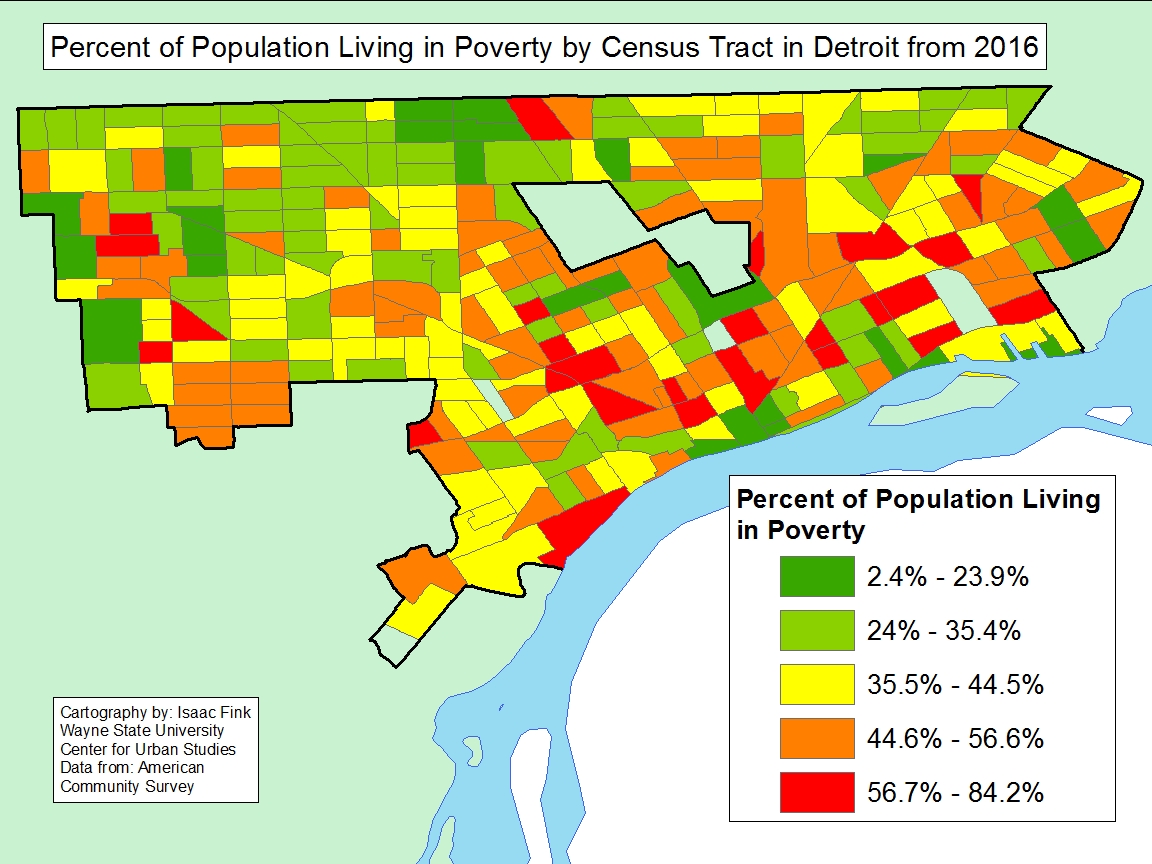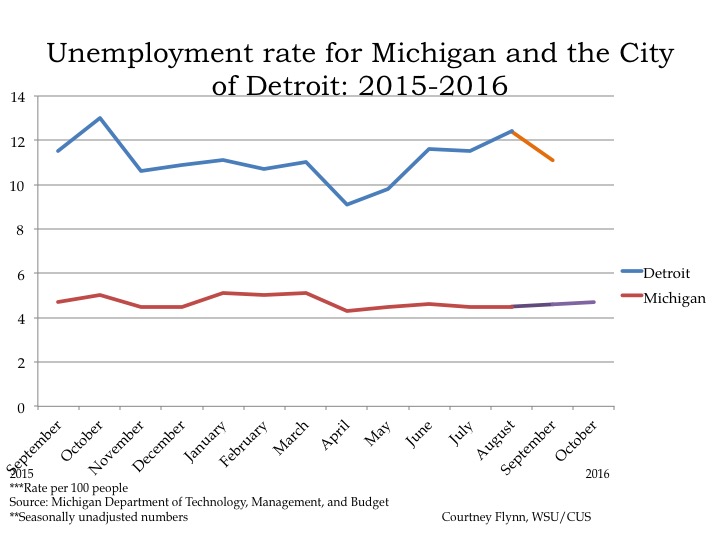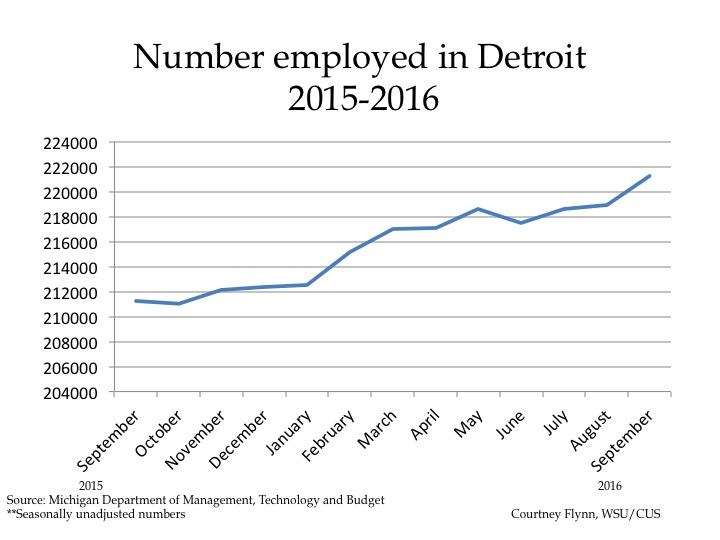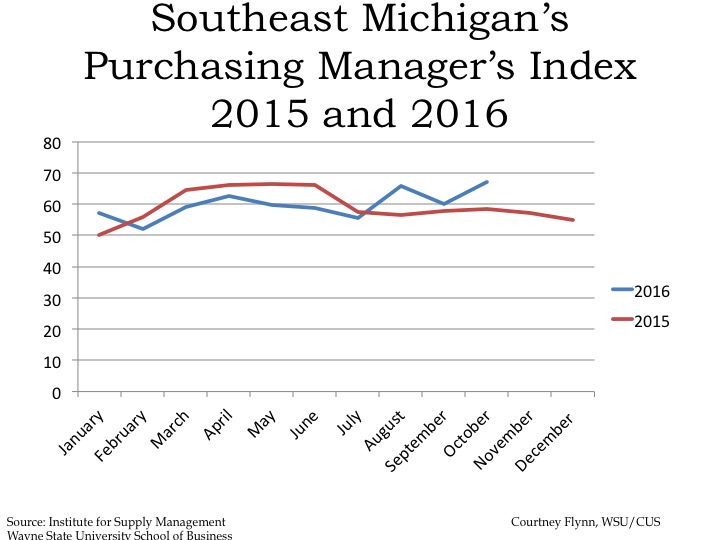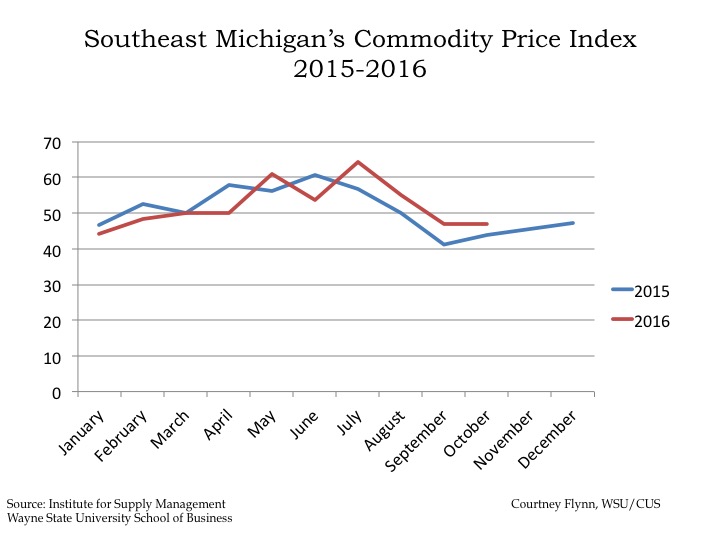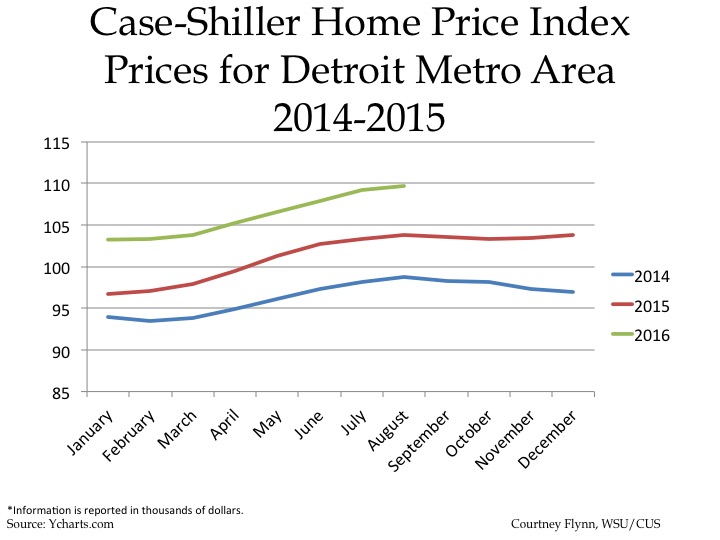The total number of COVID cases in Michigan increased to 29,263 (Chart 1), which was equivalent to 293 cases per 100,000 people (Chart 2) on April 16. Of those total COVID cases, the City of Detroit had 7,382 cases, Oakland County had 5,778 cases, Wayne County (excluding Detroit) had 5,619 cases and Macomb County had 3,992 cases (Chart 3). The number of confirmed cases in Washtenaw, Livingston, Monroe and St. Clair counties combined totaled 1,538, with Washtenaw County accounting for 826 of those cases, according to the most recent data from the State.
The daily data highlighted in these posts is from Michigan.gov/coronavirus, where data is updated daily at 3 p.m. Historical data was supplied from covidtracking.com, which republishes COVID data from the State.
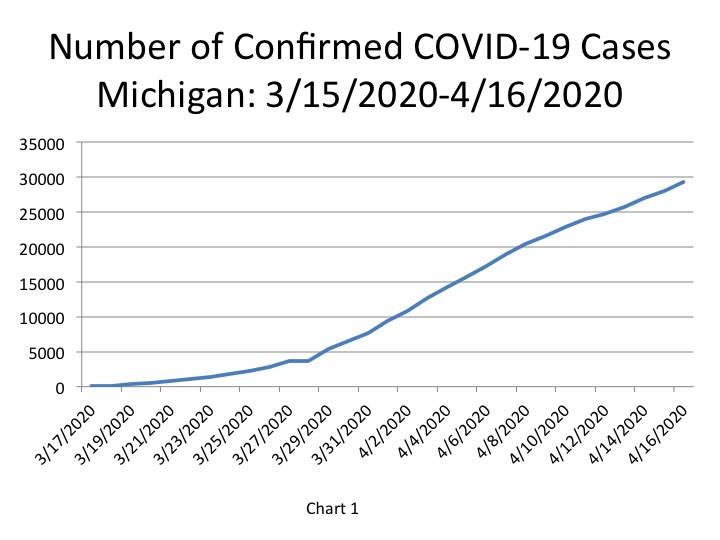
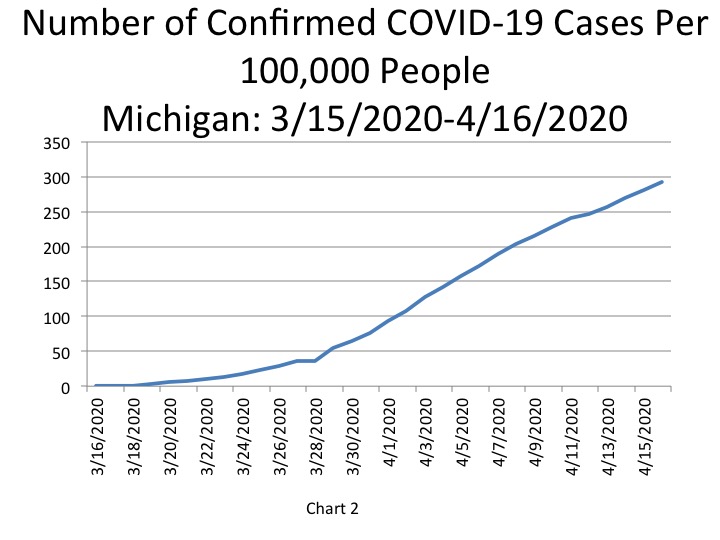
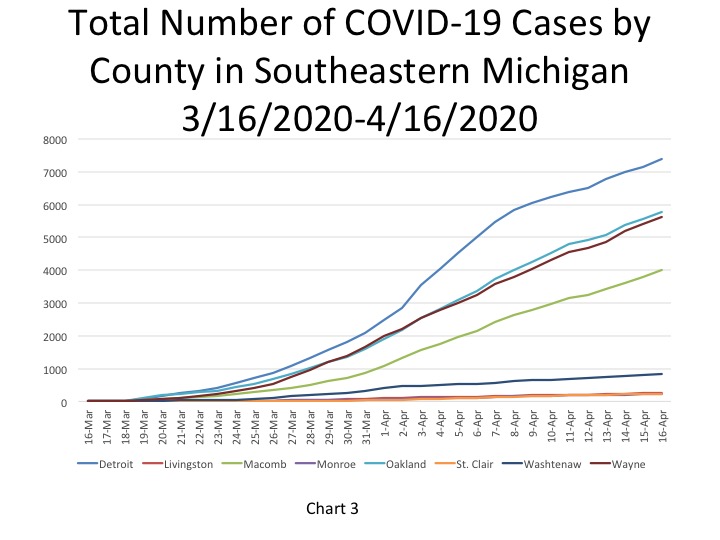
In Chart 4 we see that the City of Detroit has consistently had the highest number of COVID cases per 100,000 people, which was a rate of 1,097 on April 16. Oakland County had the second highest rate at 859 cases per 100,000 people and Wayne County (excluding Detroit) had 835 cases. Macomb County had 593 COVID cases per 100,000 people. When looking at Chart 4 we also see that there were per capita increases for every county between April 15 and April 16, with Detroit having the largest day-to-day per capita rate increase at 36.
Chart 5 shows that Detroit, Macomb, St. Clair, Wayne and Washtenaw counties experienced decreases in the number of new COVID cases between April 15 and April 16. On April 16, Detroit reported the highest number of new COVID cases at 246. Wayne County had 211 new cases, Oakland County had 202 and Macomb County had 200. Washtenaw County had the fifth highest number in the region at 28 new cases.
When looking at new COVID cases on a per capita basis, the data shows that Detroit and Macomb County still have the highest rates (Chart 6). According to the data, on April 16 Detroit had 37 new COVID cases per 100,000 people and Macomb County had 23 new COVID cases per 100,000 people; Wayne County had 20 and Oakland County had 16. In Oakland County, the number of new COVID cases per 100,000 people has been decreasing since April 14.
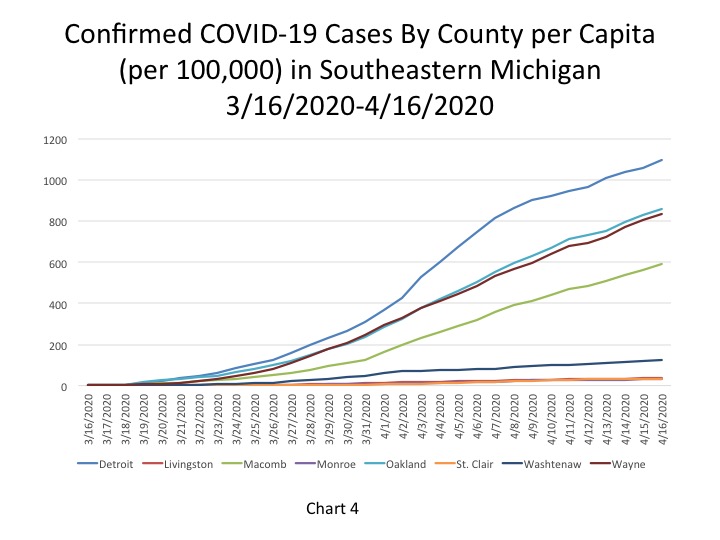
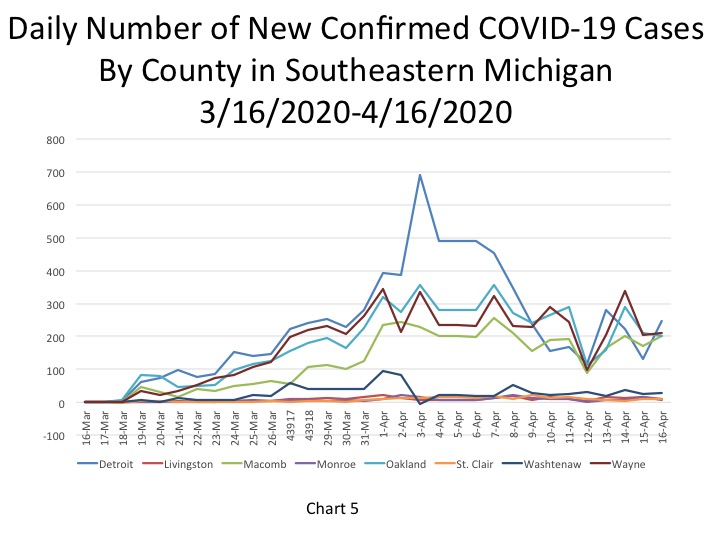
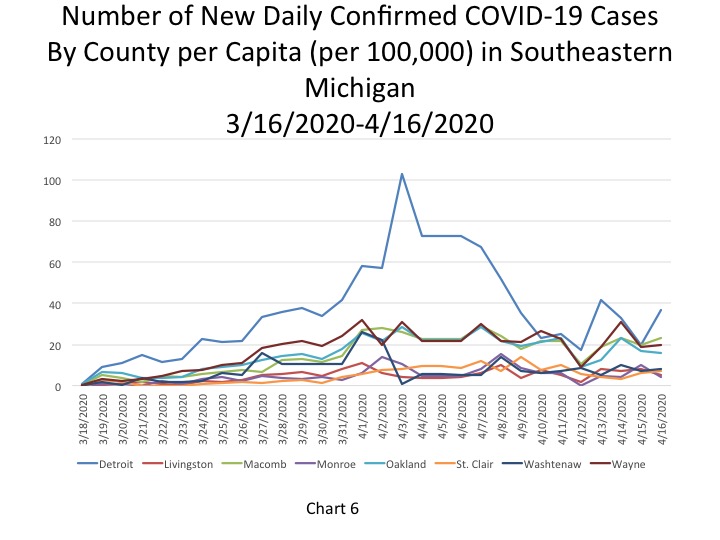
In addition to the raw data of confirmed cases, we also show the percent change in the number of cases reported day-to-day. On April 16 the percent change from April 15 was 4.29 percent, an increase from the day’s prior change of 4 percent.
Originally, we were reporting the day-to-day percent change in the number of cases from March 16. However, there was a spike in the number of tests available early on that made this data set also spike (on March 18 the day-to-day percent change as 320%). We have now started showing percent change data from March 21 forward to allow readers a more precise visual. If you would like to see the earlier versions of this data set please review our earlier posts.
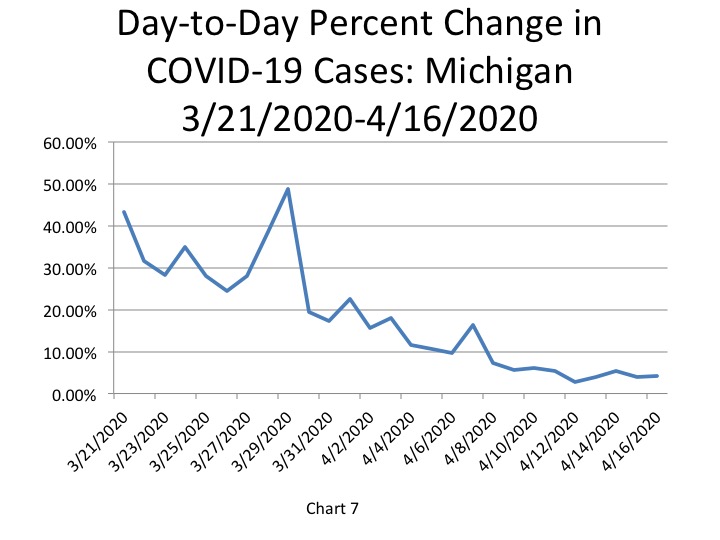
It was reported by the State of Michigan that on April 16 the total of COVID-19 deaths reached 2,093. This was a 9 percent increase from April 15, which had a slightly smaller increase of 8.7 percent of the day prior (Chart 9). The 2,093 total deaths reported for April 16 was 172 deaths higher than what was reported on April 15 (Chart 10). According to the State of Michigan, the reported increase in deaths on April 16 is related to a new weekly death certificate review the Michigan Department of Health and Human Services has put in place. As a part of this process, records that identify COVID-19 infection as a contributing factor to death are compared against all laboratory confirmed cases of COVID-19 in the Michigan Disease Surveillance System (MDSS). If a death certificate is matched to a confirmed COVID-19 case and that record in the MDSS does not indicate a death, the MDSS record is updated to indicate the death and the appropriate local health department is notified. These matched deaths are then included with mortality information posted to the State’s Michigan Coronavirus website. As a result of this week’s assessment, the data from April 16 includes 65 additional deaths that have been identified through this methodology.
Of the total deaths reported, the number of COVID deaths in Detroit on April 16 toped over 500 at 546. On April 16, the Michigan Department of Health and Human Services also reported 435 total deaths in Wayne County (excluding Detroit), 420 in Oakland County and 354 in Macomb County. Washtenaw County had 25 deaths and Livingston, Monroe and St. Clair counties all had 10 deaths or less (Chart 11).
On a per capita basis, per 100,000 people, Detroit also continues to have the highest number of deaths per 100,000 people at 81; there were 71 deaths per 100,000 people in Detroit on April 15 (Chart 12). On April 16 Wayne County had 65 COVID deaths per 100,000 people, Oakland County had 62, and Macomb County had 53.
The number of new COVID deaths reported in Detroit on April 16 was nearly three times higher than those reported in Wayne, Oakland or Macomb counties. On April 16 there were 71 new COVID deaths in Detroit, 26 in Wayne County (excluding Detroit), 28 in Oakland County and 24 in Macomb County. Monroe County reported 0 new deaths.
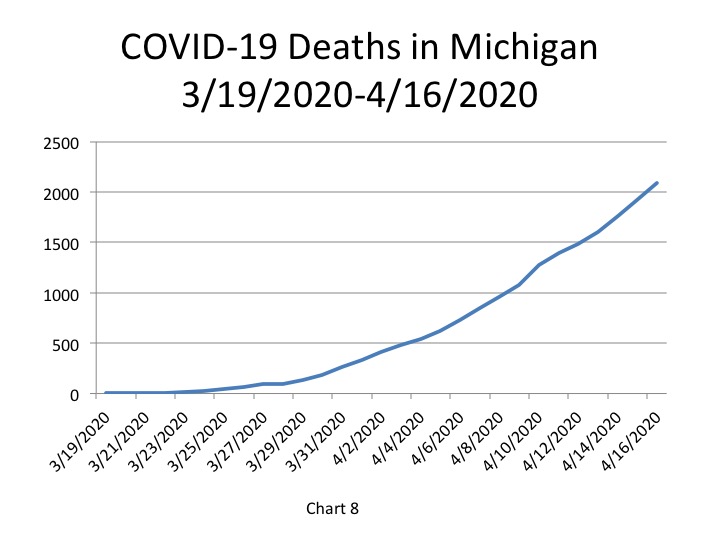
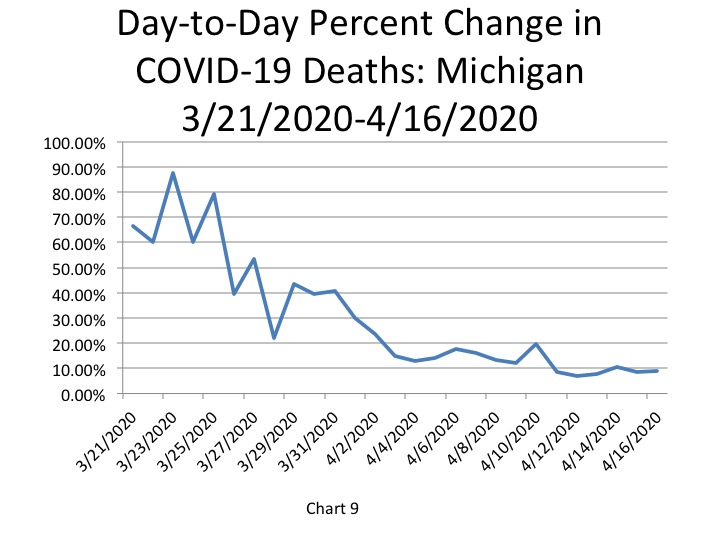
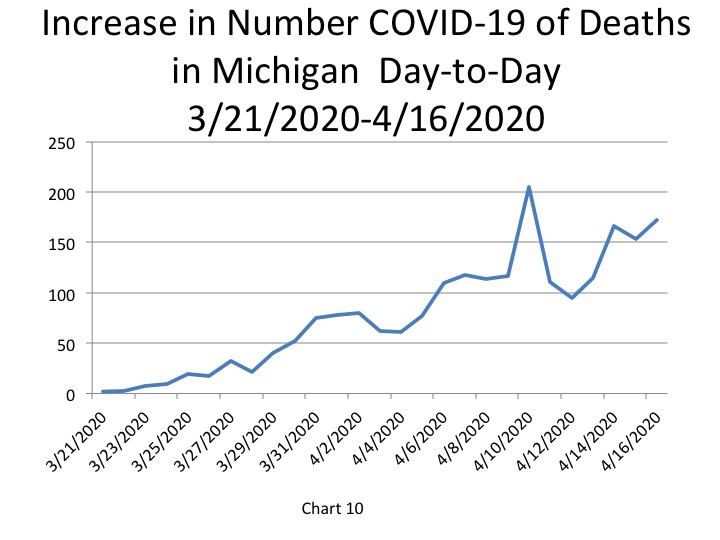
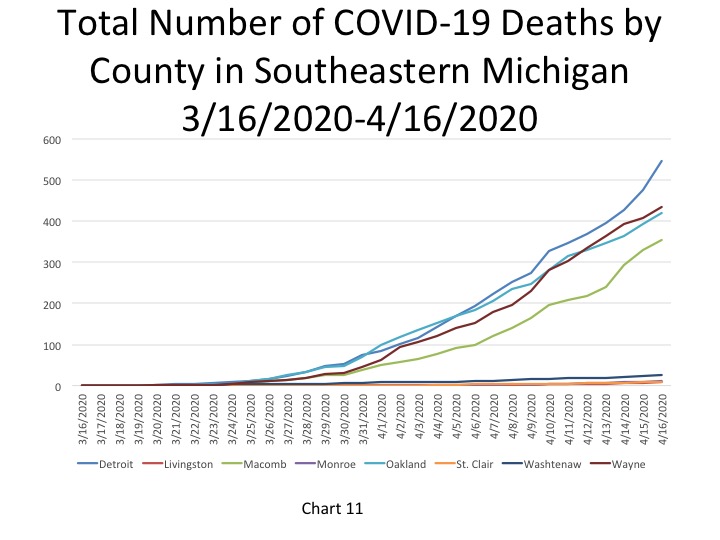
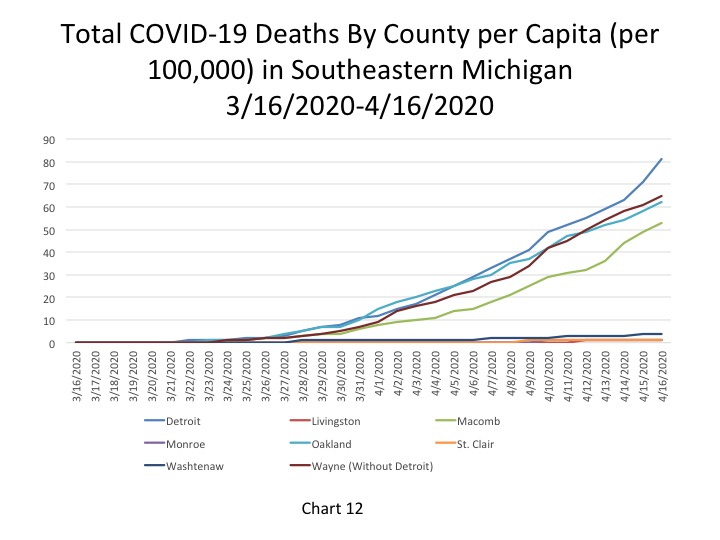
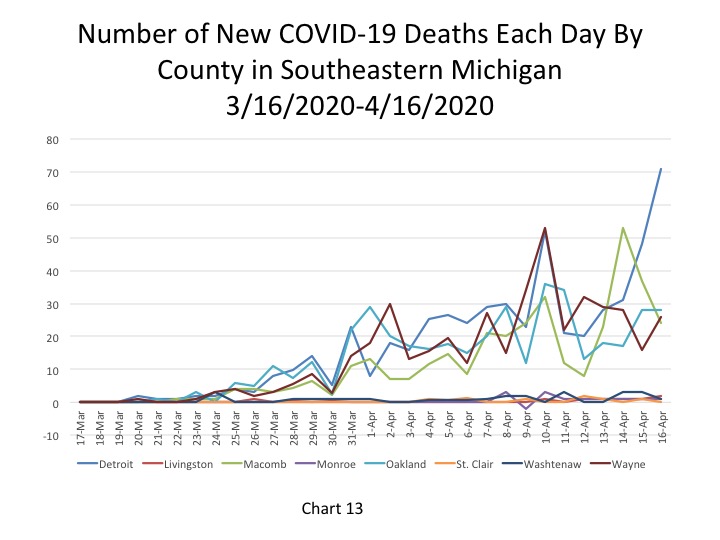
Detroit and Wayne County continue to remain the epicenter of the virus. When looking at the entire state, only one county in the Lower Peninsula has not reported any coronavirus cases and that is Benzie County (near Traverse City). The spread has not stopped, and in areas such as Detroit and Wayne and Macomb counties it doesn’t appear to have slowed much. Oakland County though has reported a decrease in the number of new daily cases for the last few days, and the number of new daily deaths has remained stagnant for the same time period. In Macomb County, the number of new daily deaths has decreased but the number of new daily cases has continued to increase.
